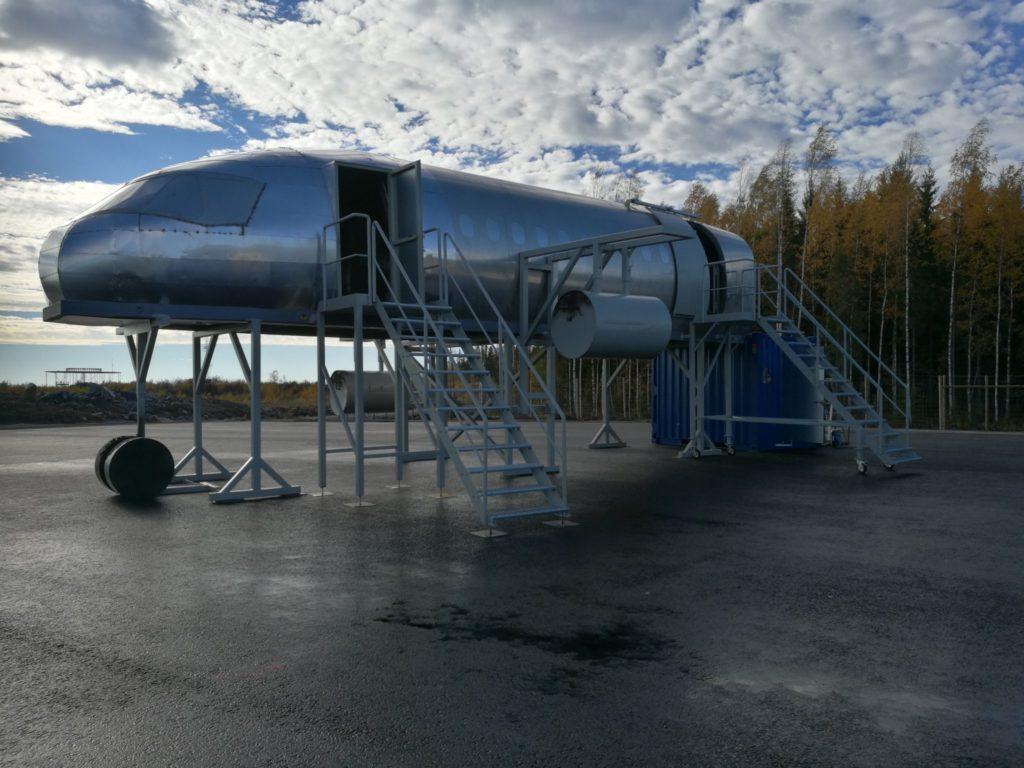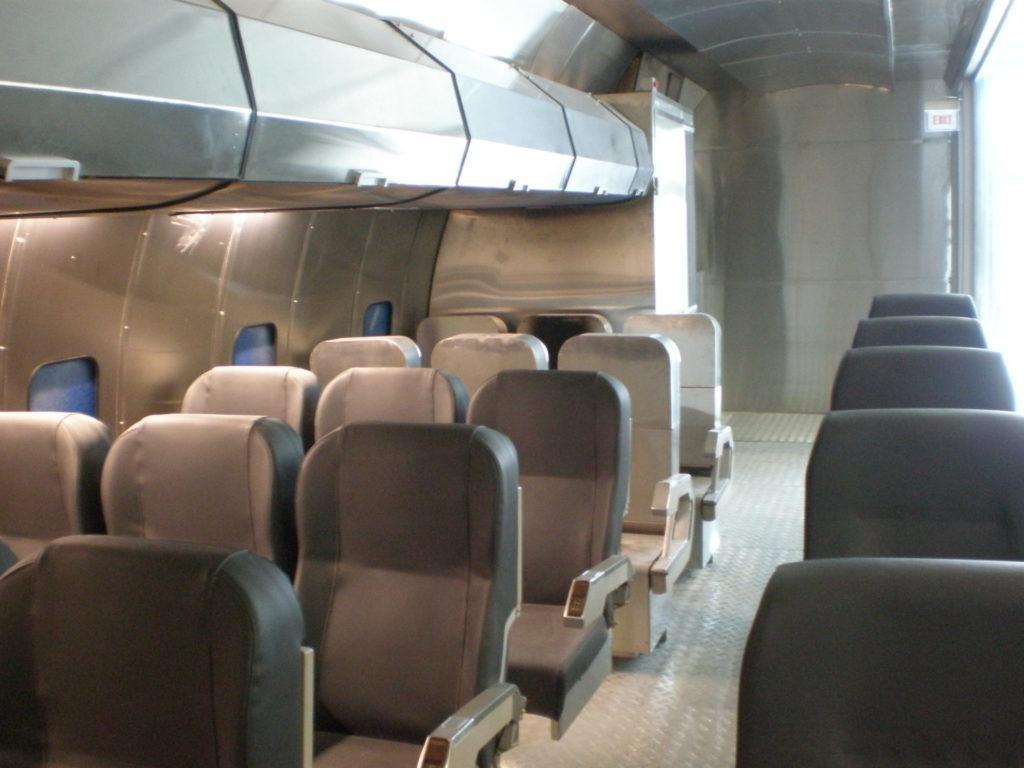Airline fire simulators
We manufacture aeroplane firefighting training simulators for airport emergency services and airline employee training purposes. Simulators are manufactured to resemble an aircraft’s shape and chassis, and can be used to simulate most common fire and rescue situations taking place in an aeroplane.
The aircraft chassis is raised on desired height and equipped with training fires on both inside and outside of the hull. The outside fires include for example engine fires and landing gear fires. On the inside fires can be simulated for cargo space, cockpit, lavatory, kitchen, galley, and seats as required. Interior fires are accompanied by an artificial smoke machine.
Each training fire is equipped with gas fuelled burner station, which has automatic ignition, flame control and extinguishing systems. Adaptive flame control enables trainings of many different levels of difficulty and intensity. Computer controlled automatic logic controlled simulators constantly monitor gas concentration levels, temperature, and oxygen and carbon monoxide levels inside the simulator. The automatic safety system reacts immediately, if the situation inside the simulator changes at any point.
For whom?
Each training fire is equipped with gas fuelled burner station, which has automatic ignition, flame control and extinguishing systems. Adaptive flame control enables trainings of many different levels of difficulty
and intensity. Computer controlled automatic logic controlled simulators constantly monitor gas concentration levels, temperature, and oxygen and carbon monoxide levels inside the simulator. The automatic safety system reacts immediately, if the situation inside the simulator changes at any point.
Close to the airport
PLC guided, liquid gas fuelled firefighting simulators are well suited to be planted close to airports, since the flames and artificial smoke do not cause any danger to air traffic. Moving all airport personnel for training off-site is expensive and time consuming. Training during working shifts creates specific and strict requirements for the location of firefighting simulators.
Functioning rescue service in airports
Emergency and rescue services often have to practice cross-department simultaneous action in preparation for any hazardous situation. Training performed during stand-by shifts can be cancelled or postponed with one press of a button in case of an alarm. Firefighting simulators are easy and cost effective to use and have a long lifespan. Convertibility and fast and easy changing of practice hazards guarantee even demanding trainings for any
airports personnel.


References
We have delivered an aeroplane type firefighting simulator for three Finnish airports. These airports are Rovaniemi (2016), Oulu (2017), and Tampere (2018)
